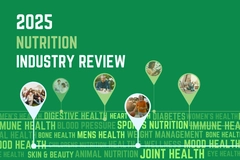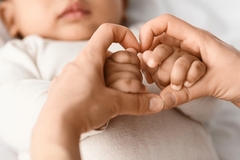
- Industry news
Industry news
- Category news
- Reports
- Key trends
- Multimedia
Multimedia
- Journal
- Events
- Suppliers
Suppliers
- Home
- Industry news
Industry news
- Category news
- Reports
- Key trends
- Multimedia
Multimedia
- Events
- Suppliers
Suppliers
Holy cow: Scientists breed world’s first transgenic bovine able to produce human insulin in milk

18 Mar 2024 --- Researchers have successfully bred the first-ever transgenic cow capable of producing human insulin in her milk in a novel method that could help solve insulin shortages. And now the findings of the study provide the basis for a future initiative to breed a “purpose-built” transgenic herd capable of supplying insulin at a greater scale.
Teams from the University of São Paulo, Brazil, and the University of Illinois Urbana-Champaign, US, were motivated to carry out the research because of the concerning global growth in demand for human insulin for the treatment of diabetics.
“Mother Nature designed the mammary gland as a factory to make protein really efficiently. We can take advantage of that system to produce a protein that can help hundreds of millions of people worldwide,” says Matt Wheeler, lead author of the study describing the development of the cow, and a professor in the Department of Animal Sciences at the University of Illinois Urbana-Champaign.
The insulin and proinsulin would need to be extracted and purified for use. Wheeler estimated a cow could make 1 gr of insulin per liter, while a typical Holstein cow makes 40 to 50 liters per day.
This points to transgenic cow milk as a promising source of insulin, as the typical unit of insulin is 0.0347 mg. The proof-of-concept could be scaled up after additional testing and FDA approval.
“That means each gram is equivalent to 28,818 units of insulin, and that's just one liter; Holsteins can produce 50 liters per day. You can do the math,” he adds.
 The transgenic cow makes about three to one biologically active insulin to proinsulin.Transgenic cow
The transgenic cow makes about three to one biologically active insulin to proinsulin.Transgenic cow
The research article published in the Biotechnology Journal presents the methods and results that created the world’s first transgenic cow capable of producing human insulin.
A pseudo-lentivirus containing a promoter of bovine β-casein — a type of phosphoproteins compromising about 80% of proteins in cow milk — as well as human insulin sequences, were used by the researchers to produce adult fibroblasts, a prevalent type of skin cell.
These cells were then used for a nuclear transfer, a form of cloning that allows the reconstruction of an embryo by transferring the genetic material from a single donor cell to an unfertilized egg with no genetic material.
The transgenic embryos were placed in a recipient cow, resulting in one pregnancy and birth.
“Using a DNA construct specific to mammary tissue means there’s no human insulin circulating in the cow’s blood or other tissues. It also takes advantage of the mammary gland’s capabilities for producing large quantities of protein,” Wheeler explains.
Analysis of the transgenic cow’s milk found a molecular mass corresponding to proinsulin and insulin and the presence of more human insulin than proinsulin.
The tests of the milk’s contents further identified proteases, enzymes that break down proteins into smaller polypeptides or single amino acids, forming new protein products.
These could convert proinsulin into insulin, while another similar insulin-degrading enzyme could degrade the recombinant protein.
“Our goal was to make proinsulin, purify it out to insulin and go from there. But the cow basically processed it herself. She makes about three to one biologically active insulin to proinsulin.”
Plans to breed “purpose-built” transgenic herd
The team attempted to impregnate the animal once she was mature but were unsuccessful. The cow’s lactation was first stimulated hormonally instead, which results in lower lactation.
The Brazil-based team plans to re-clone the cow with the aim of achieving pregnancy and full lactation cycles in the next generation. Eventually, they would like to create and breed the cows with transgenic bulls to produce transgenic offspring and establish a purpose-built herd.
According to Wheeler, even a small herd could quickly outcompete existing methods of insulin production through yeast and bacteria without the need for highly technical facilities or infrastructure.
“I could see a future where a 100-head herd, equivalent to a small Illinois or Wisconsin dairy, could produce all the insulin needed for the country,” he said. “And a larger herd? You could make the whole world’s supply in a year,” he concludes.
By Milana Nikolova











